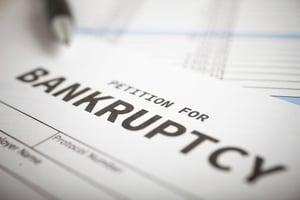The History of Bankruptcy
 The history of bankruptcy in the United States dates back to the founding of our country. The framers of the Constitution recognized that bankruptcy would be an essential element of a successful capitalist economy because the alternatives of sending individuals to “debtor’s prison” or allowing individuals to suffer under the weight of overwhelming debt would be unacceptable. Therefore, they authorized Congress to provide a legal process for citizens to resolve debt problems.
The history of bankruptcy in the United States dates back to the founding of our country. The framers of the Constitution recognized that bankruptcy would be an essential element of a successful capitalist economy because the alternatives of sending individuals to “debtor’s prison” or allowing individuals to suffer under the weight of overwhelming debt would be unacceptable. Therefore, they authorized Congress to provide a legal process for citizens to resolve debt problems.
The Supreme Court echoed the framers’ intentions in the case of Local Loan Co. v. Hunt (1934) by ruling that bankruptcy “gives to the honest but unfortunate debtor…a new opportunity in life and a clear field for future effort, unhampered by the pressure and discouragement of preexisting debt.” The goal of obtaining a “fresh start” is achieved through the bankruptcy discharge. A bankruptcy discharge releases the debtor from the legal liability of repaying specific debts discharged through his or her bankruptcy filing. This allows the debtor to recover and rebuild following a financial crisis.
What are the Steps in the Bankruptcy Process?
When you meet with the bankruptcy attorneys of Kain & Scott, they will explain how quickly you can obtain relief from your debt. Our law firm understands that you have been suffering with the burden of debt for some time and you are ready to move forward without the stress, anxiety, and fear caused by debt problems. Therefore, we make the process of filing bankruptcy as quick, simple, and stress-free as possible.
1. Free Bankruptcy Consultation
During your free consultation, the attorney discusses your financial situation, reviews your bankruptcy and non-bankruptcy options for resolving your debt, and explains how filing a bankruptcy can help you achieve your future financial goals.
If you choose to file a bankruptcy, you will then meet with one of our legal assistants to retain our law firm and gather the information needed to complete your bankruptcy forms. Unlike other bankruptcy law firms, we will never send you home with a thick stack of paperwork to complete on your own. We are here to help you get rid of stress — not to add to it.
2. Review and Sign Appointment
During this second appointment, your attorney reviews with you each of the completed forms that must be filed with the bankruptcy court to ensure the information is correct. Once you verify the information is correct, you sign the forms for filing with the court.
Our firm files bankruptcy cases electronically with the court; therefore, once you sign your bankruptcy petition, we can obtain a bankruptcy case number within a matter of minutes. This provides you with immediate bankruptcy protection from your creditors.
Bankruptcy Laws Designed to Protect You and Your Assets
The Bankruptcy Code contains many laws designed to protect debtors and their assets from creditors. Below is a short summary of the two most important laws in place to protect you once your bankruptcy case is filed.
Automatic Stay
Immediately upon filing your bankruptcy case, the automatic stay prohibits creditors from continuing or beginning any actions to collect debts. The automatic stay stops foreclosures, repossessions, wage garnishments, collection lawsuits, and other collection efforts. Creditors are prohibited from attempting to collect debts or seize assets without court approval. Creditors who violate the bankruptcy stay may face sanctions from the bankruptcy court.
Bankruptcy Discharge
When you complete your bankruptcy case, you will receive a bankruptcy discharge. The bankruptcy discharge releases you from your personal and legal liability to repay specific debts discharged through your bankruptcy case. This is a permanent order from the court that prohibits creditors from taking any action against you or your property in the future to try to recover payment for discharged debts. For example, creditors are forbidden to send collection letters, contact you by telephone, seize any of your property, or file lawsuits related to the discharged debts.
With very few exceptions (i.e. student loans, alimony, child support, and some taxes), most unsecured debts are discharged through your bankruptcy filing. A bankruptcy discharge does not release a valid lien on secured property unless the lien has been avoided (i.e. rendered unenforceable) in the bankruptcy case. However, you have the option of retaining the assets by paying the creditor or surrendering the assets in complete satisfaction of the debt. In other words, you will not be liable for any remaining amount owed on the account once the creditor has liquidated the asset and applied the funds to payoff off the lien.
Many bankruptcy laws have been designed to protect the rights of debtors before, during, and after a bankruptcy filing. Our attorneys will discuss how these laws apply to your specific situation during your bankruptcy consultation and will answer all of your bankruptcy questions so that you can make an informed decision regarding the best way to resolve your debt problem for you and for your family.
Now that you have the answer to your question "how does bankruptcy work", go ahead a explore a few other options for solving your debt problem with the ebook below. If you believe bankruptcy might be the right solution for your situation, we welcome you to get in touch with us!



